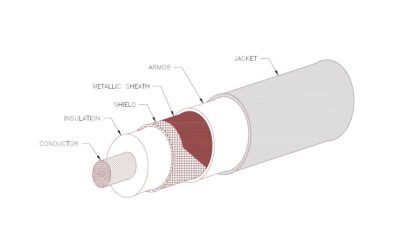Determining the right course of action can be challenging, especially when services span various industries and require specialized expertise

AE firms are often found in the middle of complex, multifaceted projects that have ambiguous ethical implications. Determining the right course of action can be challenging, especially when services span various industries and require specialized expertise. These dilemmas will often revolve around the intersection of sustainability, technology, social responsibility and the built environment.
Here are some of the most critical ethical dilemmas AE firm leaders will continue to wrestle with along with thoughts on how to address them:
- Environmental sustainability vs. economic viability: The imperative to design and construct sustainable, environmentally friendly buildings and infrastructure are typically at odds with economic constraints and cost considerations of clients—and presto, you’ve got your first ethical conflict on the list. Your clients may have different priorities than you. They may prioritize profit margins, return on investment or short-term financial gains over long-term sustainability. How far firms go in advocating for what they believe is in the best interest of the environment and future generations depends on how strongly they feel a moral and ethical responsibility to create environmentally responsible and sustainable projects.
- Climate change mitigation and adaptation: Decisions related to building design, materials and location will increasingly need to address climate change impacts. Ethical questions arise regarding how to prioritize resilience and adaptation efforts. How should we balance the needs and desires of the current generation with those of future generations? How do we prioritize adaptation efforts for vulnerable and marginalized communities? Should resources be distributed evenly, or should they be prioritized based on factors such as population density, vulnerability or economic value?
- Resource scarcity and material choices: Choosing building materials and construction methods that minimize environmental impact, such as reducing carbon emissions and minimizing resource depletion, may conflict with traditional practices and cost considerations. AE firms often face ethical conflicts when choosing between cost-effective but environmentally harmful materials and methods and more sustainable, yet potentially costlier alternatives. They must weigh the long-term environmental benefits against short-term financial constraints.
- Equity and social responsibility: Ensuring that AE projects benefit the broader community and do not contribute to social disparities will be an ongoing ethical challenge. AE firms will have to decide if and how to engage with the communities in which they work, whether that’s conducting community needs assessments, seeking local input, or collaborating with representative organizations to ensure that projects address the community’s specific needs and concerns of residents. Firms may also make decisions about if and how to ensure that the benefits of their projects—such as improved infrastructure, housing, or economic opportunities—are accessible and equitable for all members of the community, including marginalized and vulnerable groups.
- Data privacy and security: With the increasing use of data and technology, AE firms must grapple with ethical issues surrounding data privacy, security and the responsible use of data. Collecting and storing data, such as client information, building designs or construction details, for example, raises ethical questions about respecting the privacy of individuals and organizations and the need to protect sensitive data from people who are not exactly well-intentioned.
- Technological advancements: The integration of rapidly emerging technologies such as artificial intelligence and automation raises seemingly endless questions about their ethical use, potential job displacement and the need for responsible technology adoption. For example, how can firms address the issue of bias in AI algorithms and ensure that these systems are fair and do not discriminate against certain groups of people? How can firms make AI and automation systems more transparent so that users can understand how decisions are made, especially in safety-critical applications such as autonomous vehicles or medical diagnostics? How can firms design and implement AI and automation systems in a way that minimizes the negative impact on employment and helps retrain or transition workers displaced by these technologies?
How can your firm effectively address these and other ethical dilemmas the industry will continue to face? Here are five ideas to consider:
- Devote leadership to it. Create an ethics committee or designate an ethics officer responsible for overseeing ethical considerations within your organization. If they aren’t already, this individual or group will become well-versed in ethical principles and emerging technology trends—and would be responsible for setting the ethical tone for the company.
- Create awareness. Conduct regular training sessions and workshops to raise awareness about ethical issues related to emerging technologies. Ensure that all employees, from top leadership to back-office support, are well-informed about these concerns.
- Establish ethical guidelines and policies. Develop clear and comprehensive ethical guidelines and policies that explicitly address the use of AI and automation on projects. These guidelines should cover privacy, bias, transparency, accountability and other relevant ethical dimensions.
- Increase stakeholder engagement. Initiate conversations with all stakeholders, including clients, end-users, and affected communities, to understand their concerns and ethical expectations. Consider their input when making ethical decisions and defining project goals.
- Mitigate risk. Develop strategies for risk mitigation and risk management related to ethical concerns, which may involve setting up contingency plans in cases of ethical violations or adverse consequences.
So, what stance will your firm take on these and other ethical dilemmas in the years to come? How will you decide?
– Morrissey Goodale is a CFE Media and Technology content partner.



